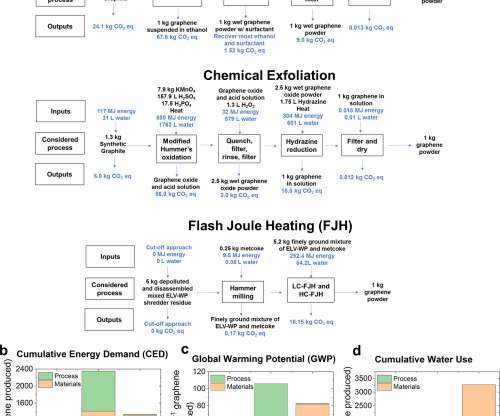Rice flash Joule heating process recycles plastic from end-of-life F-150 trucks into high-value graphene for new vehicles
Green Car Congress
MAY 27, 2022
The Rice lab of chemist James Tour introduced flash Joule heating in 2020 to convert coal, petroleum coke and trash into graphene. Process schematic, workflow, and current discharge for FJH conversion of ELV-WP into FG. Our collaborative discovery with Rice will become even more relevant as Ford transitions to electric vehicles.

















Let's personalize your content